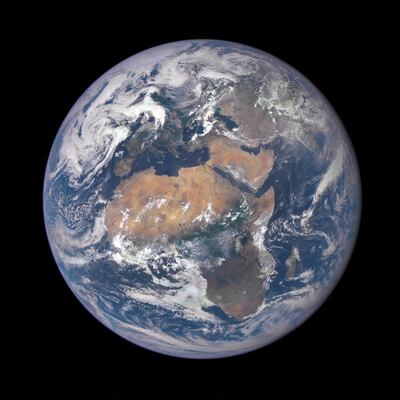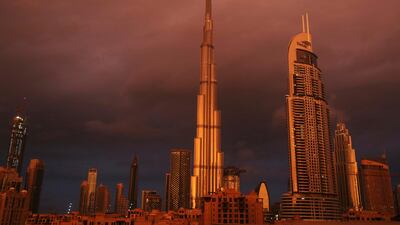An asteroid close to the size of Burj Khalifa is set to hurtle past Earth at a jaw-dropping speed of more than 23,000 kilometres per hour on Sunday.
It has all the hallmarks of a dramatic scenario fit for an action-laden Hollywood script, yet most UAE residents will be soundly asleep when it happens.
For while the space rock's rapid journey counts as a 'close encounter' in astronomical terms, asteroid 2000 QW7 will pose no danger.
The vast object will still be about 5.3 million km away when its orbit takes it closer to Earth than it has been since 2000, just before 4am in the UAE.
It is thought likely that the asteroid - which is between 290 and 650 metres in diameter, while the Burj Khalifa is about 830 metres tall - will be visible by telescope from the Emirates at around this time, although the Moon might make observations difficult.
The event is eagerly awaited in scientific circles and offers an opportunity for experts to gain a greater understanding of asteroids.
“Any close encounter is exciting because, first of all, we can have more information about these objects,” says Professor Massimiliano Vasile, a professor of space systems engineering at the University of Strathclyde in the United Kingdom.
“We can observe much better the shape, get a better understanding of the total mass of the object. Observing the object means that we know much better where the object is going to be in the future.”

Asteroids are defined as rocky objects that, like the Earth, orbit the Sun, but the movements of QW7 and Earth are such that a close encounter takes place only once every 19 years or so.
Based on its last close encounter with Earth, in 2000, the asteroid is likely to be visible only to people with eight-inch or larger telescopes and experience of viewing the sky at night.
“Generally asteroids are not something that you clearly see in the sky. It’s not that you can go out in the night, you look up and there’s the asteroid. It’s not a shooting star; it’s not a comet,” said Prof Vasile.
The distance from the Earth to the Moon is only about one fourteenth of what the distance from the Earth to 2000 QW7 will be at its closest.
At its nearest, the asteroid will be about 0.03564 astronomical units (AU) from Earth, where one AU is the average distance between the Earth and the Sun.
Despite being classified by NASA as a Potentially Hazardous Asteroid (PHA), 2000 QW7 will pass safely, leading only to a loss of sleep for some keen-eyed stargazers.
Asteroid impacts have, however, caused upheaval in the past, notably 66 million years ago when one several kilometres in diameter collided with Earth, wiping out the dinosaurs and most other animal and plant species.
*Those interested in viewing 2000 QW7 are advised to check its exact location at https://ssd.jpl.nasa.gov/?horizons


